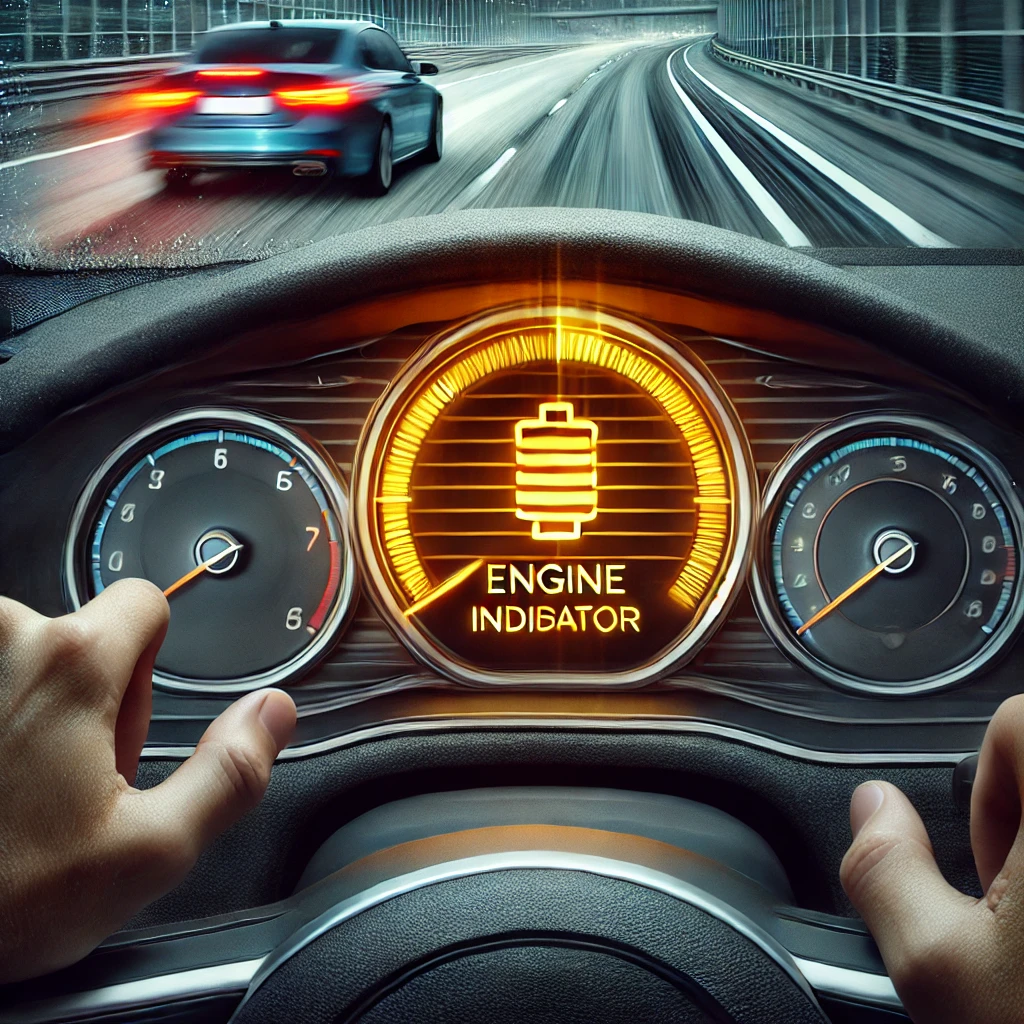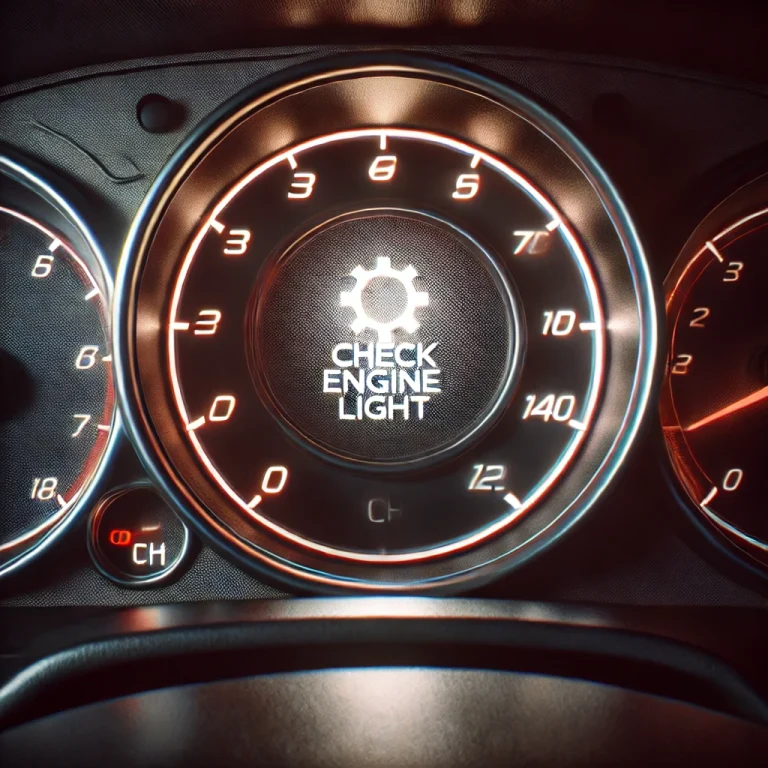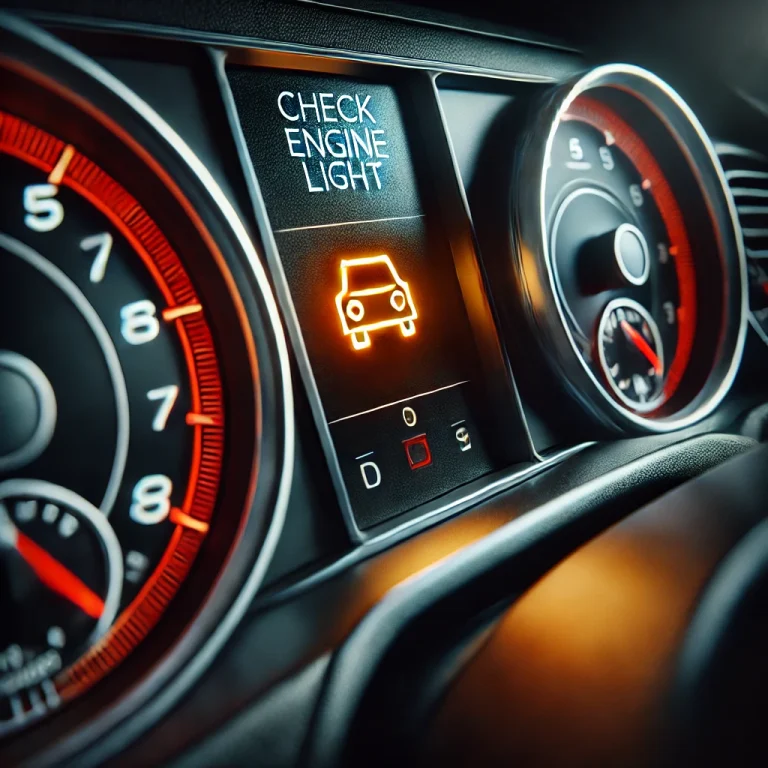Engine Indicator Light
When your engine indicator light comes on, immediate action is crucial. This light signals potential engine troubles that can lead to costly repairs if ignored. Safely pull over, turn off the engine, and check for any unusual signs like smoke or strange noises.
Restart and see if the light persists; if it does, avoid driving further and seek a mechanic’s help promptly. This quick response can prevent further damage and guarantee your vehicle’s safety. Understanding the dashboard notifications, diagnostic tools, and maintenance measures can help you address the issue effectively.

Engine Indicator Light Overview
Have you ever wondered about the small but essential light on your vehicle’s dashboard that goes by the name of the engine indicator light? This light, often shaped like an engine, serves as a significant warning system for potential engine issues. When illuminated, it indicates that there may be a problem with your vehicle’s engine that requires attention. It is important to differentiate the engine indicator light from other warning lights on your dashboard to address the issue promptly.
Understanding the engine indicator light can help you take immediate actions when it comes on. Ignoring this warning can lead to more severe problems and costly repairs down the line. By recognizing the importance of the engine indicator light and responding to it promptly, you can guarantee the safety and longevity of your vehicle. Remember, a proactive approach to vehicle maintenance can prevent major issues and keep you safe on the road.
Understanding Dashboard Notifications
If you’ve ever been behind the wheel when your engine indicator light suddenly illuminates, you know the importance of understanding dashboard notifications. Dashboard notifications are essential in alerting you to potential issues with your vehicle’s engine. These notifications can include the check engine light flashing, oil pressure warning, or coolant temperature warnings. Understanding these notifications is imperative for your safety on the road.
The dashboard notifications are designed to provide you with early warnings of possible engine problems. Ignoring these notifications can lead to more severe issues down the line, potentially causing damage to your engine or even putting you at risk of a breakdown. By paying attention to these notifications and taking prompt action, you can prevent costly repairs and guarantee the longevity of your vehicle.
Common Activation Reasons
The engine indicator light activates to signal potential issues within your vehicle’s engine system. Common reasons for its activation include sensor malfunctions, fuel system problems, and exhaust system issues. Sensor malfunctions can cause the light to come on due to issues with the oxygen sensor, mass airflow sensor, or other significant sensors. Fuel system problems, such as a loose gas cap or a faulty fuel injector, may trigger the light as well.
Additionally, exhaust system issues like a failing catalytic converter can lead to the activation of the engine indicator light. It is vital to address these issues promptly to prevent further damage to your vehicle and guarantee your safety on the road. Regular maintenance and timely repairs can help prevent these common activation reasons and keep your engine running smoothly. If the engine indicator light illuminates, it is important to have the problem diagnosed and resolved by a professional mechanic to avoid potential risks.
Immediate Response Actions
Upon seeing the engine indicator light illuminate on your dashboard, immediate action is essential. When the light comes on, first, safely pull over to the side of the road and turn off the engine. Check for any signs of smoke, unusual noises, or a strong smell of burning. If everything appears normal, cautiously restart the engine and see if the light remains on.
If it does, refrain from driving further to prevent potential damage. Contact a qualified mechanic for advice on the next steps or have the vehicle towed to a repair facility for a thorough inspection. Ignoring the engine indicator light can lead to more severe issues and costly repairs down the line. Remember, your safety and the well-being of your vehicle depend on prompt attention to warning lights like the engine indicator light.
Diagnostic Tools and Techniques
When faced with the illumination of the engine indicator light in your vehicle, understanding the diagnostic tools and techniques available becomes paramount. Modern vehicles are equipped with On-Board Diagnostics II (OBD-II) systems, which allow you to use OBD-II scanners to access information about the issue triggering the light.
These scanners plug into a port under the dashboard and provide specific Diagnostic Trouble Codes (DTCs) that indicate the problem. By retrieving these codes, you can pinpoint the issue more accurately, helping you or a professional mechanic address it efficiently.
Professional mechanics also utilize advanced diagnostic tools like multimeters, oscilloscopes, and smoke machines to diagnose complex engine problems. These tools can analyze electrical systems, sensor readings, and vacuum leaks, offering an all-encompassing view of the engine’s condition. Understanding how to use basic OBD-II scanners and recognizing when to seek professional help based on the diagnostic results can save time and prevent further damage to your vehicle.
Seeking Professional Assistance
Should your engine indicator light persist despite basic troubleshooting attempts, it is advisable to seek professional assistance promptly. When facing complex issues with your vehicle, the expertise of a trained mechanic can guarantee a thorough diagnosis and effective solutions. Here are some reasons why seeking professional help is vital:
- Specialized Knowledge: Mechanics have the training and experience to accurately pinpoint engine problems.
- Advanced Diagnostic Tools: Professionals utilize specialized equipment to diagnose issues that may not be apparent through basic checks.
- Prevention of Further Damage: Timely intervention by a mechanic can prevent minor issues from escalating into costly repairs.
- Safety Assurance: Confirming that your vehicle is in peak condition is essential for your safety on the road.
- Warranty Considerations: Consulting a professional may be necessary to maintain any existing warranties on your vehicle.
Preventive Maintenance Measures
To maintain ideal vehicle performance and prevent potential engine issues, regular preventive maintenance measures are essential. Ensuring your vehicle receives scheduled oil changes, filter replacements, and spark plug inspections can greatly reduce the likelihood of triggering the engine indicator light. Regularly checking fluid levels, such as coolant and transmission fluids, is critical for engine health.
Additionally, monitoring tire pressure, wheel alignment, and brake condition can prevent issues that may indirectly affect engine performance. Timely replacement of worn-out belts, hoses, and air filters is also important in maintaining a healthy engine. By following the manufacturer’s recommended maintenance schedule and addressing minor issues promptly, you can avoid more serious problems that may lead to engine malfunctions. Remember, staying proactive with preventive maintenance not only keeps your engine running smoothly but also contributes to overall vehicle safety and longevity.
Decoding Diagnostic Trouble Codes
To effectively address issues identified by the engine indicator light, understanding Diagnostic Trouble Codes (DTCs) becomes pivotal. Here are some key points to help you decode these codes:
- DTC Basics: DTCs are alphanumeric codes stored in your vehicle’s computer system that indicate specific issues related to the engine.
- Code Retrieval: Use an OBD-II scanner to retrieve DTCs and understand what triggered the engine indicator light.
- Interpretation: Each DTC corresponds to a particular problem, ranging from minor issues like a loose gas cap to more serious concerns like engine misfires.
- Severity Assessment: Some codes may reflect immediate dangers, such as overheating, while others signify less urgent problems that still require attention.
- Professional Consultation: If you’re unsure about a DTC’s meaning or how to address it, seek guidance from a qualified mechanic to prevent potential safety hazards.
Understanding DTCs empowers you to take informed actions when the engine indicator light illuminates, ensuring your safety on the road.
Cost of Ignoring Warnings
Ignoring the warnings signaled by the engine indicator light can lead to significant financial repercussions. When you disregard the engine indicator light, you risk exacerbating the underlying issue, potentially resulting in costly repairs. Ignoring this warning may cause minor problems to escalate into major malfunctions, leading to more extensive and expensive fixes. Additionally, continued driving with a triggered engine indicator light can negatively impact fuel efficiency, causing you to spend more on gas than necessary.
By neglecting the warning and failing to address the root cause promptly, you not only jeopardize your safety but also increase the likelihood of incurring substantial repair bills. Consequently, it is essential to address the engine indicator light as soon as it illuminates to prevent further damage and avoid costly consequences down the road. Remember, prioritizing timely maintenance can save you money in the long run.
Stay Proactive for Vehicle Health
When the engine indicator light alerts you to potential issues in your vehicle, staying proactive for vehicle health becomes crucial. Here are some essential steps to guarantee your vehicle stays in peak condition:
- Regularly check your vehicle’s fluids, including oil, coolant, and brake fluid levels.
- Keep track of your tire pressure and tread depth to prevent accidents and maintain fuel efficiency.
- Follow the manufacturer’s recommended maintenance schedule for oil changes, filter replacements, and other critical services.
- Pay attention to any unusual noises, vibrations, or changes in vehicle performance that may indicate underlying issues.
- Invest in quality fuel and adhere to proper fueling practices to prolong the life of your engine and guarantee top performance.
Frequently Asked Questions
Can Extreme Weather Conditions Trigger the Engine Indicator Light?
In extreme weather, your vehicle’s sensitive systems may be affected, potentially causing the engine indicator light to illuminate. It serves as a vital warning, signaling underlying issues. Stay vigilant, as varied conditions can impact your car’s performance.
Is It Safe to Drive With the Engine Indicator Light on Intermittently?
When the engine indicator light flickers intermittently, it’s not safe to drive. Address underlying issues promptly to prevent potential breakdowns or hazards on the road. Seek professional help to diagnose and fix the problem for safe driving.
Can a Loose Gas Cap Cause the Engine Indicator Light to Come On?
Wondering if a loose gas cap triggers the engine light? Yes, it can! Make certain the cap is tight. If the light persists, seek professional help. Don’t risk safety; address issues promptly to prevent potential engine problems.
How Does the Engine Indicator Light Differ From the Oil Pressure Warning Light?
To differentiate, the oil pressure light warns of low oil pressure, essential for engine lubrication, while the engine light signals various issues. Recognize the symbols on the dashboard; respond promptly to safeguard your vehicle’s health and safety.
Can a Low Battery Affect the Engine Indicator Light Activation?
Imagine your vehicle as a symphony orchestra. Just as a low battery dims the stage lights, it can also impact the engine indicator light. Guarantee proper power flow to keep your warning system vigilant.
Conclusion
Now that you understand the importance of the engine indicator light, remember that ignoring it can lead to costly repairs. Did you know that 7 out of 10 drivers ignore the warning signs until it’s too late? Stay proactive and address any issues promptly to keep your vehicle running smoothly and avoid breakdowns on the road. Don’t be part of the statistic – take action when the engine light comes on.

